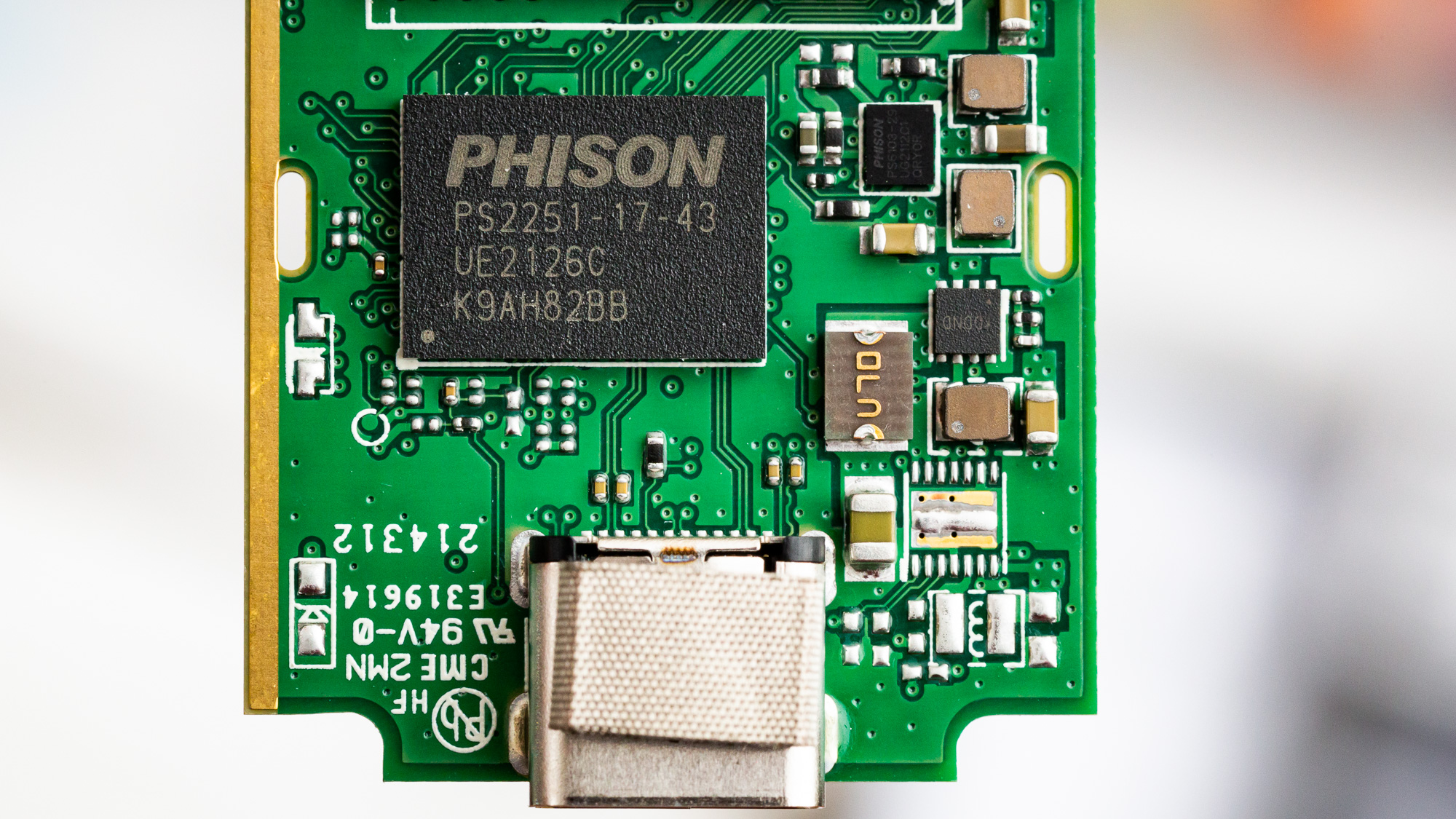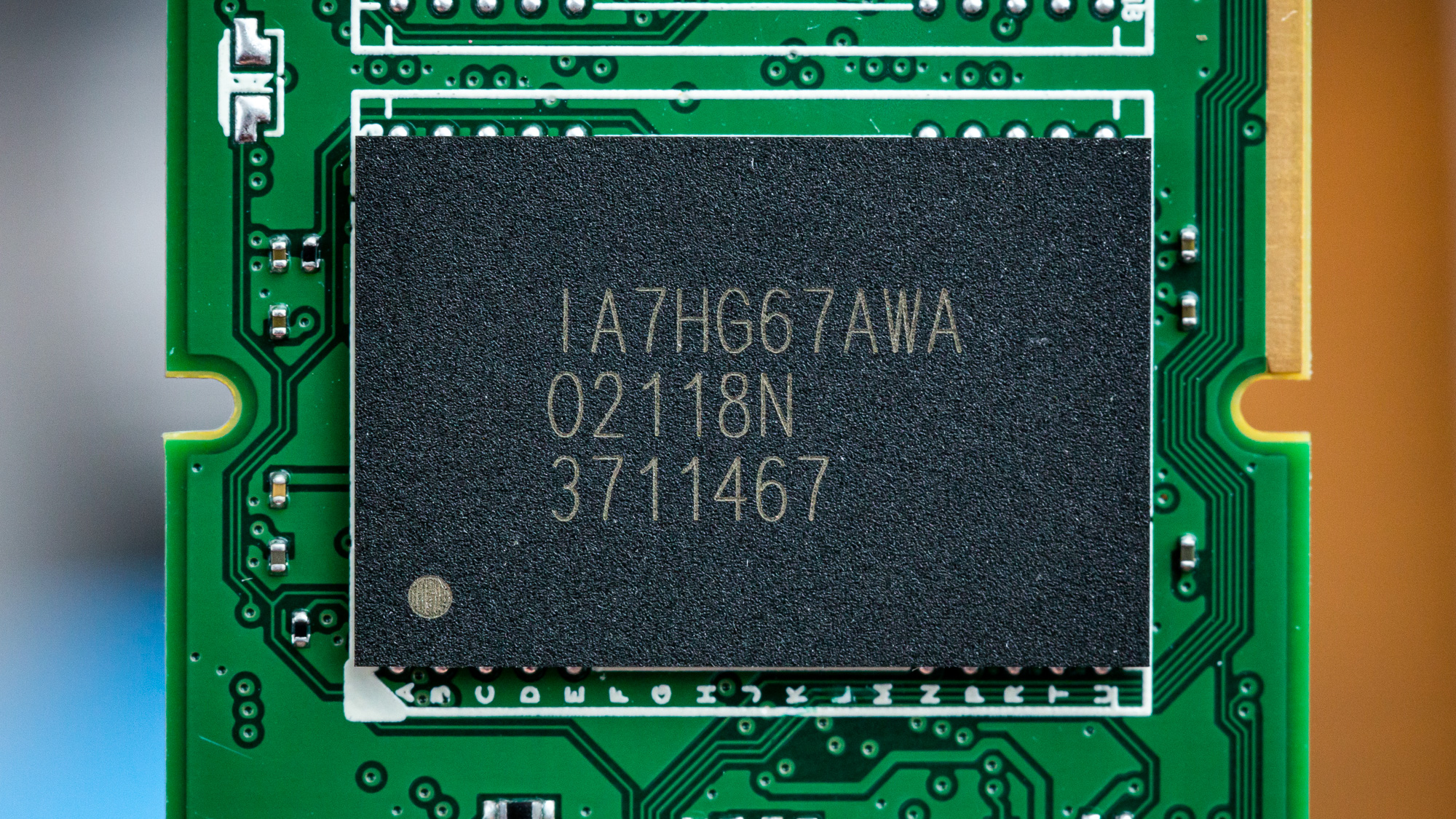Tom's Hardware Verdict
Inland’s 1TB Platinum External SSD is a very portable SSD that’s efficient and priced right, but its performance is limited and the drive is generally disappointing. However, it could still be handy for the right user.
Pros
- +
Diminutive size makes it quite portable
- +
Power-efficient and ready to go
Cons
- -
No software
- -
Uses QLC and isn't shuckable due to the controller
- -
Lackluster cooling
Why you can trust Tom's Hardware
Inland's Platinum External SSD looks to put the company's stamp on the portable drive market. This drive from Inland, Micro Center’s in-house SSD brand, is another “P” model, as in Platinum, but it diverges from the company's typical drives by being particularly portable, making it a contender for our list of best external SSDs.
We’ve reviewed plenty of Inland drives over the years, with varying results. The drives do have some common themes, though: no frills, competitive warranty, and cheaper pricing. Inland often uses the same hardware as other manufacturers but offers no software. However, you can pick up their drives in a physical store — if you happen to live near a Micro Center — which can be convenient for many PC builders. This drive is more oriented at laptop or portable users who need a quick, efficient way to transport data, basically serving as a more substantial USB flash drive.
It will be interesting to see how this drive holds up against traditional portable SSDs, like the Samsung T7 Shield, as well as other embedded solutions like the Kingston XS2000.
Inland Platinum External SSD Specifications
| Product | 500GB / 512GB | 1000GB / 1024GB |
|---|---|---|
| Pricing | $64.99 | $104.99 |
| Capacity (User / Raw) | 500GB / 512GB | 1000GB / 1024GB |
| Form Factor | N/A | N/A |
| Interface / Protocol | USB-C / USB 3.2 Gen 2x1 | USB-C / USB 3.2 Gen 2x1 |
| Included | USB Type-C to Type-C, USB Type-C to Type-A cables | USB Type-C to Type-C, USB Type-C to Type-A cables |
| Controller | Phison U17 | Phison U17 |
| DRAM | N/A | N/A |
| Memory | 96-Layer Micron QLC | 96-Layer Micron QLC |
| Sequential Read | 1,100 MBps | 1,100 MBps |
| Sequential Write | 700 MBps | 1,000 MBps |
| Random Read | N/A | N/A |
| Random Write | N/A | N/A |
| Security | N/A | N/A |
| Power | Bus-powered | Bus-powered |
| Endurance (TBW) | N/A | N/A |
| Dimensions | 1.54 x 3.94 x 0.34 inches | 1.54 x 3.94 x 0.34 inches |
| Weight | 4.4 oz | 4.4 oz |
| Part Number | 336313 | 337550 |
| Warranty | 4-Year | 4-Year |
The Inland Platinum External SSD comes in 500GB and 1TB capacities. Speeds stretch up to 1.1/1.0 GBps of sequential read/write throughput, matching the 10 Gbps interface. (Micro Center’s site has it the other way around, different than the Amazon listing, but reads are typically faster than writes.)
The Platinum's pricing is actually pretty good compared to other portable 10 Gbps NVMe SSDs. However, the hardware is devised to offer a budget solution, so temper your expectations if you’re looking at this product. It’s likely good for basic storage and decent in read workloads and bursty write workloads, but not much else.
Inland offers a four-year warranty with this drive. The drive is small and bus-powered; the former characteristic is a nice bonus if you really need portability. That’s especially true as Phison has designed the U17 controller to be low-power, making it nice for use with battery-limited laptops.
Software and Accessories
The SSD comes with short USB Type-C to Type-C and Type-C to Type-A cables. This allows the device to be used with pretty much any system under the sun. Obviously, speeds will be reduced with a 5 Gbps host port. As with Inland’s other drives, there are no frills here. Some users might get this drive for archival use or backups, requiring them to grab free software.
A Closer Look
Internally, portable SSDs are normally an entry-level NVMe drive coupled with a USB interface thanks to a separate bridge chip. However, hybrid controllers are becoming more common, like the Phison U17 solution in this device and the SMI SM2320 that we recently examined in the Kingston XS2000. Of course, a 20 Gbps Phison variant — using the faster U18 sibling of this drive’s controller — would be better for comparing sequential performance.
Get Tom's Hardware's best news and in-depth reviews, straight to your inbox.
This type of configuration has benefits as the design is streamlined. The drive will pull less power and can be less cumbersome in size, although it can no longer be used internally in a PC. This does mean that a failure will render the entire thing inoperable versus just having to replace a drive or an enclosure. These solutions are, of course, also DRAM-less and may not be as generally performant as traditional drives. Therefore, these designs are specialized, but this is not a new concept as with client BGA SSDs.

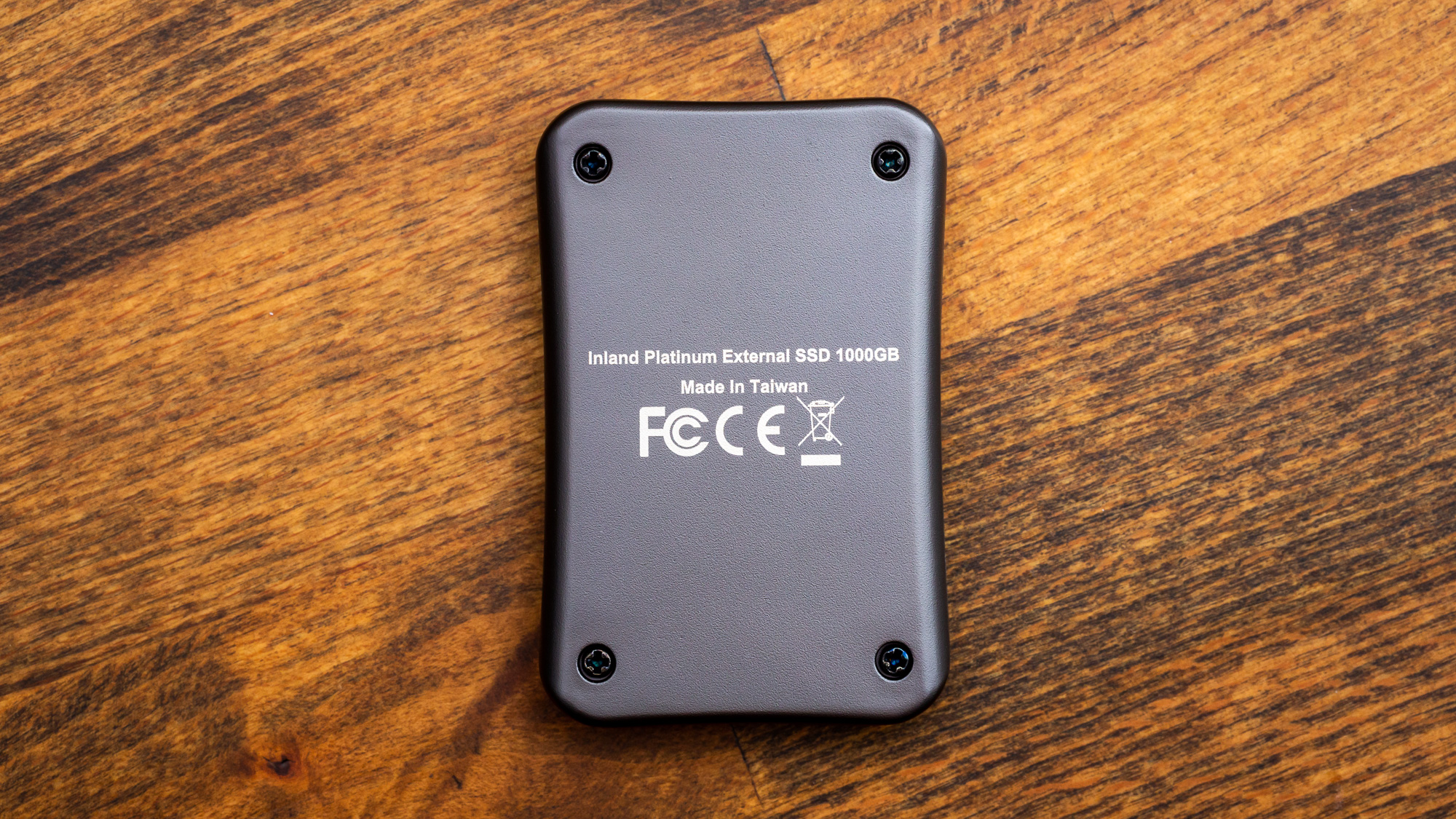
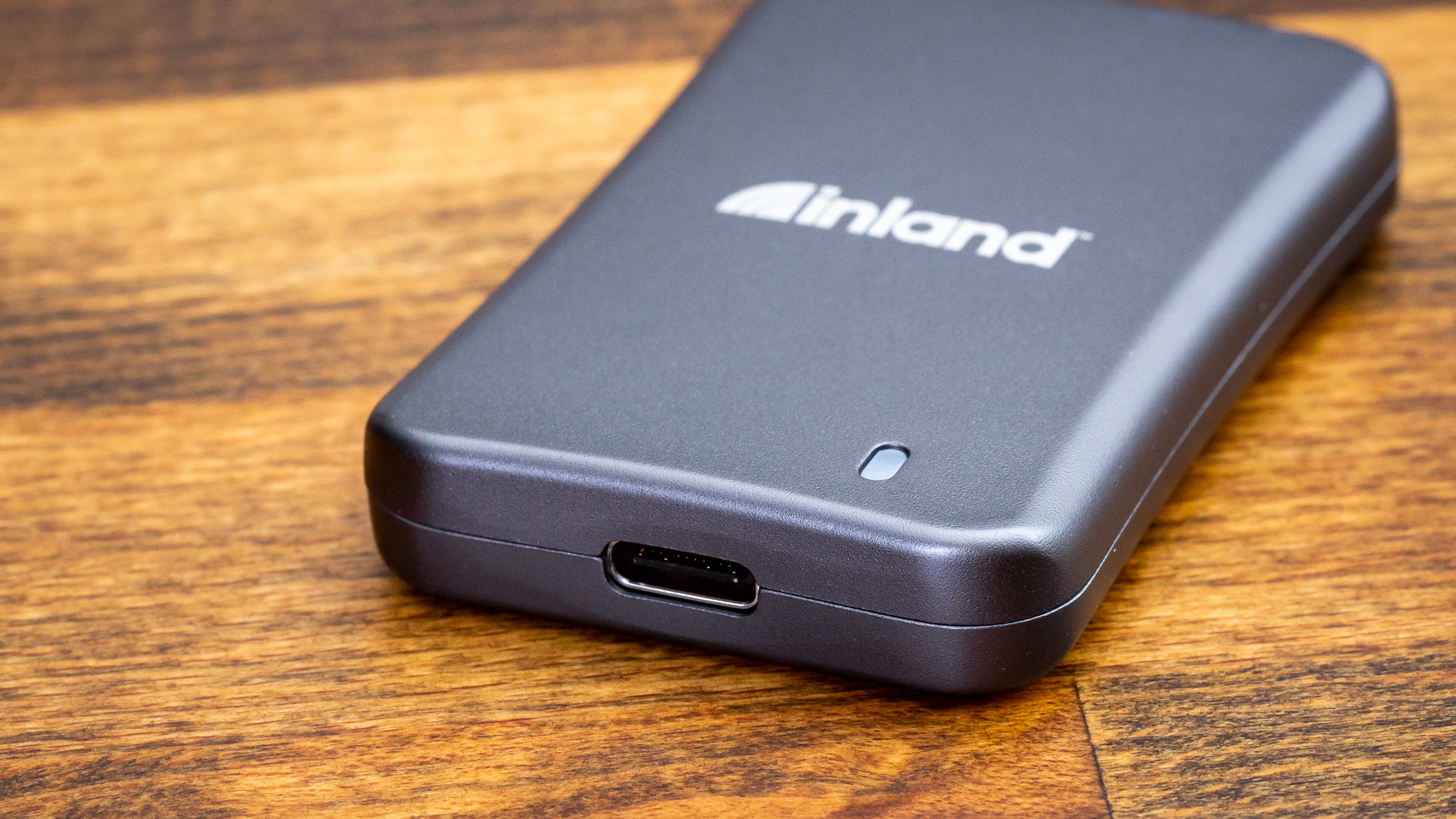
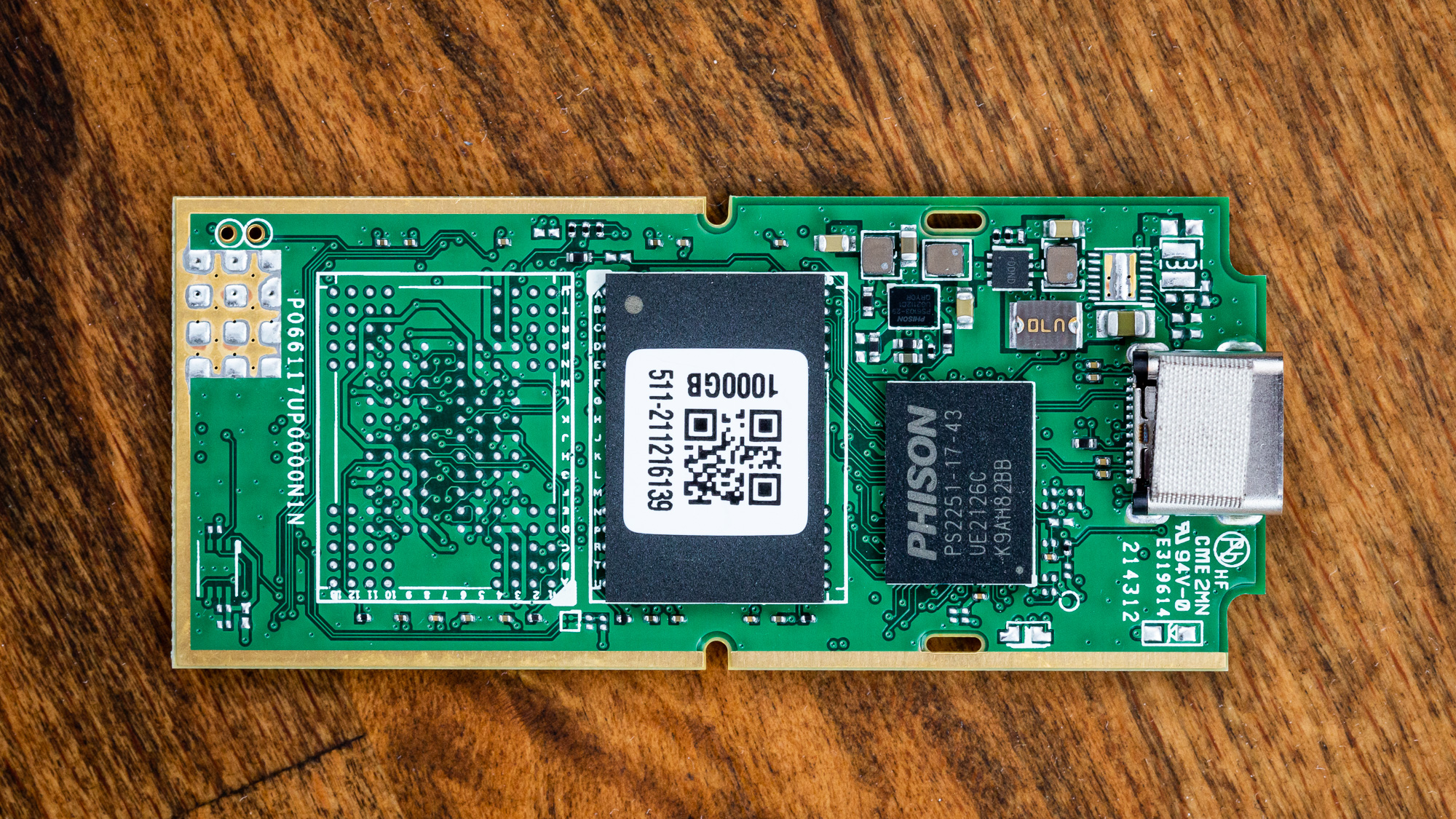
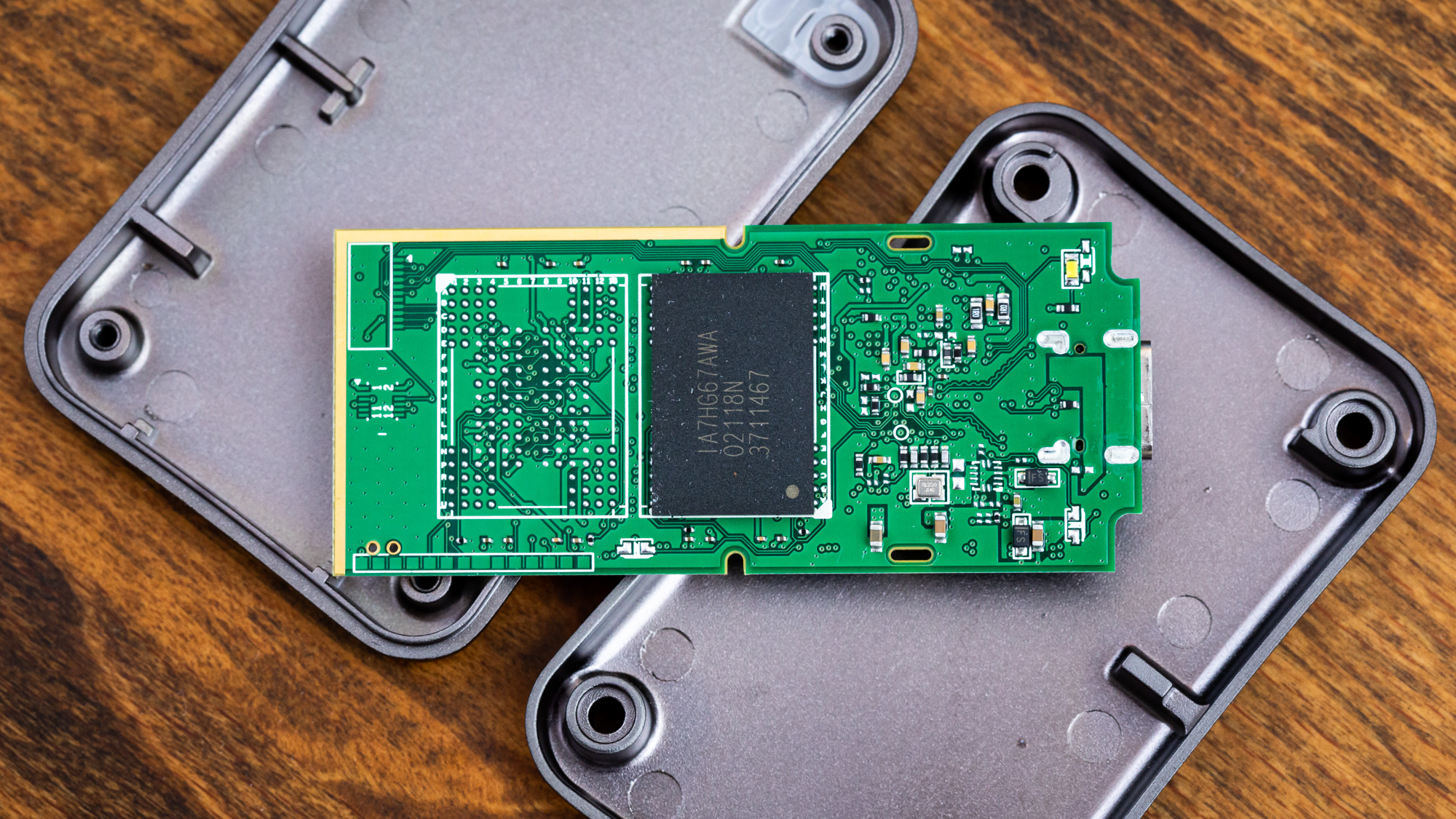
The Inland Platinum External’s case is plain, but at least it is easy to open. The LED indicator on top flashes white to show I/O activity. You’re just four screws away from the inside, which unfortunately means there’s no real cooling to be had. We’ll see later if this is an issue. Internally, the 1TB model has two NAND packages — one on either side — plus the DRAM-less Phison U17 controller. The interface is USB-C. As this controller is embedded, meaning there is no separate bridge chip, so the drive is not shuckable.
The Phison U17 controller is a single solution for portable SSDs. Its sibling, the U18, has a faster 20 Gbps interface. Both controllers are 2-channel, but bus speeds are 800 MT/s and 1400 MT/s for the U17 and U18, respectively. We can picture these as similar to SMI’s SM2320, a controller we have reviewed in more than one product. Phison emphasizes that this native UFD controller is far more efficient than having a separate bridge chip. This makes sense since that latter configuration tends to come with a beefier 4-channel controller as well.
Looking at the bus speeds, we can translate 800 MT/s into 800 MB/s per channel, although this will be considerably lower after overhead (addressing, commands, etc.), especially for write traffic. Nevertheless, the two-channel design is sufficient to reach the maximum speeds as limited by the USB interface with 1TB or less of capacity. That also applies to the U18 with its faster bus speed, which additionally allows for higher capacities because the flash will often run at a lower rate. However, sustained performance might be worse for wear on a two-channel design, as we will test.
The flash is labeled IA7HG67AWA, which appears to be 96-layer QLC from Micron. This flash is popular on some drives driven by Phison’s E12S and E16 controllers, and it is also prominent in Intel’s 665p. Intel has since released 144-layer QLC flash with its 670p and, moreover, flash manufacturers are all working on their own 176-layer QLC, including Crucial/Micron which already has products on the market. Clearly, this is a budget-oriented device using older flash.
Micro Center lists this drive as coming with TLC. When asking an Inland representative about the flash, they quickly confirmed my suspicions that it was QLC. This may seem like an egregious mistake particularly as QLC is best at higher capacities. However, this is a two-channel device and QLC is more than adequate at 1TB. It may be a worthwhile trade-off for the tiny size and cheaper per-GB price.
MORE: Best SSDs
MORE: How We Test HDDs And SSDs
MORE: All SSD Content

Shane Downing is a Freelance Reviewer for Tom’s Hardware US, covering consumer storage hardware.
-
derekullo Is write endurance not applicable because it's unlimited or because its 2 Terabytes ?Reply
